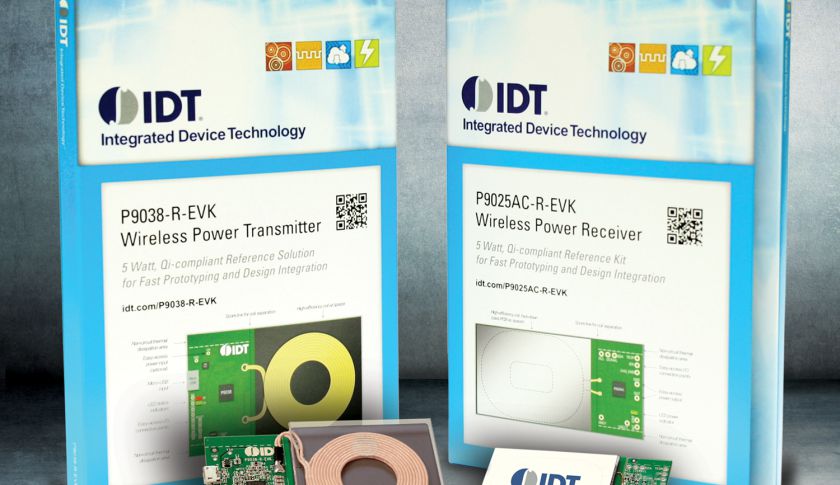
Samsung, Ikea, and LG have recently introduced wireless charging into their line of products. Now, the company who helped them build that technology is giving everyone a chance to cut the cord.
Integrated Device Technology, also known as IDT, has come up with a wireless power kit that allows engineers and hobbyists to install wireless charging capabilities into their product designs in mere hours. It’s believed to be the first DIY, plug-and-play wireless charging solution in a box that comes with an instructional video, layout guides, and semiconductors and reference boards that can be embedded in applications such as medical devices and electronic accessories, and allows them to be charged wirelessly.
“By offering a pre-configured, comprehensive, out-of-the-box solution, we make it possible for customers to design a wireless power solution with very little to no engineering support required,” said Greg Waters, president and CEO at IDT, in a company statement.
IDT have been developing wireless charging solutions for companies like Samsung—manufacturing the magnetic induction transmitter in the Samsung Galaxy charging pad and Samsung SE370 monitor—and Ikea’s new line of wireless charging-tables and lamps. Since the end of April, however, IDT engineers have worked on a kit that they hope could help small to medium-sized companies expand the use of their products into the wireless charging market, one that is estimated to grow to $13.8 billion by 2020.
It could mean a headphone stand could wirelessly charge your headphones after installation—something IDT engineers tested out themselves: “We turned it into a wireless charging stand in about three hours,” said Laurence McGarry, director of product marketing for wireless power at IDT.
The idea now is to start small, and dream big: “We’ll launch the kit and look at feedback, and maybe we’ll start to do target sub-sections of the market,” said McGarry.
While the company will provide as much help as possible to clients, McGarry hopes that the kit will be self-explanatory: “The idea was to create something so easy to install, that they won’t need support.”
More Must-Reads From TIME
- The 100 Most Influential People of 2024
- The Revolution of Yulia Navalnaya
- 6 Compliments That Land Every Time
- What's the Deal With the Bitcoin Halving?
- If You're Dating Right Now , You're Brave: Column
- The AI That Could Heal a Divided Internet
- Fallout Is a Brilliant Model for the Future of Video Game Adaptations
- Want Weekly Recs on What to Watch, Read, and More? Sign Up for Worth Your Time
Contact us at letters@time.com